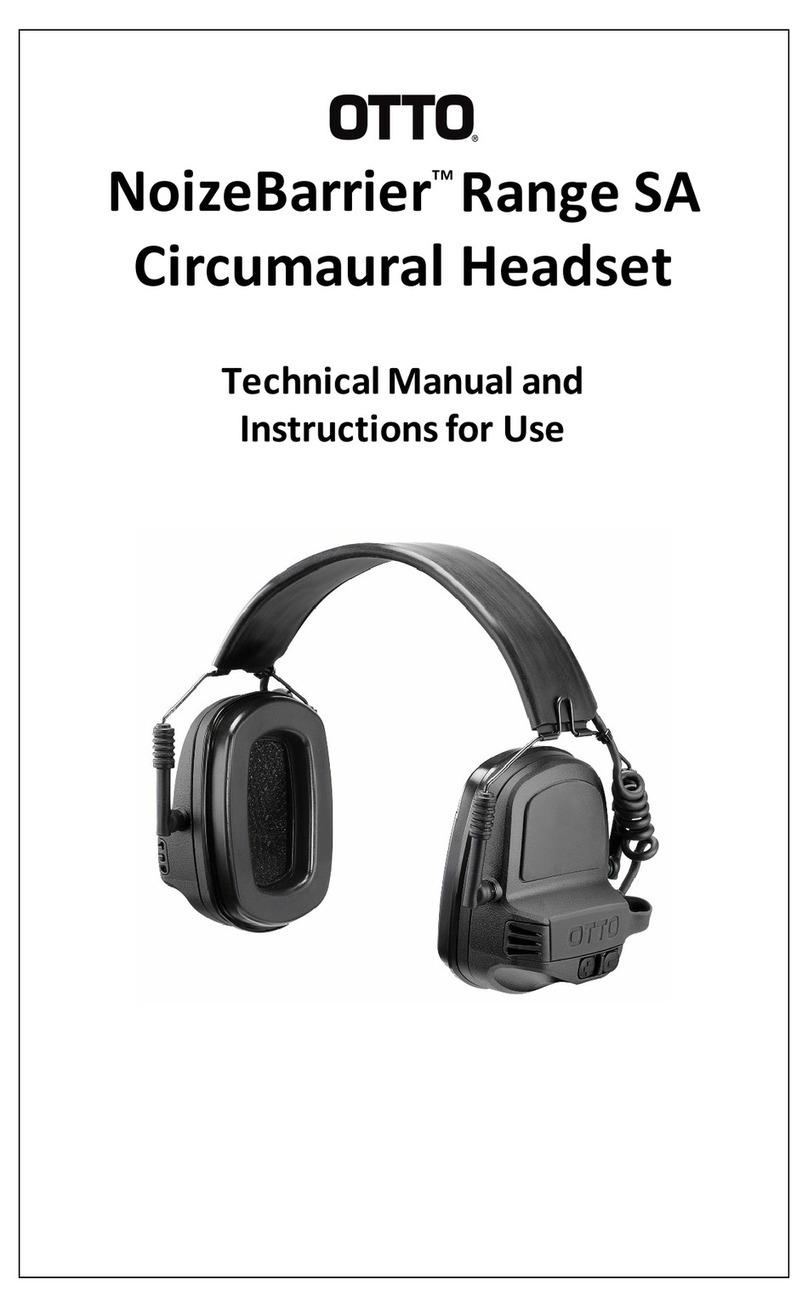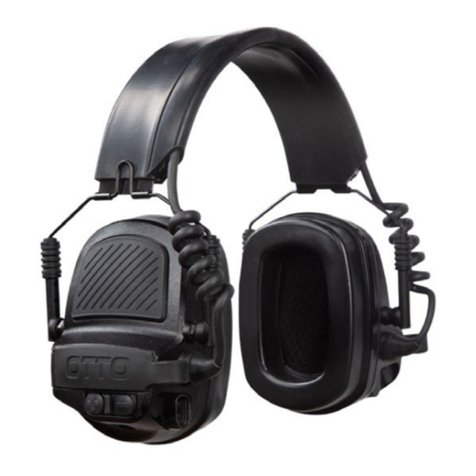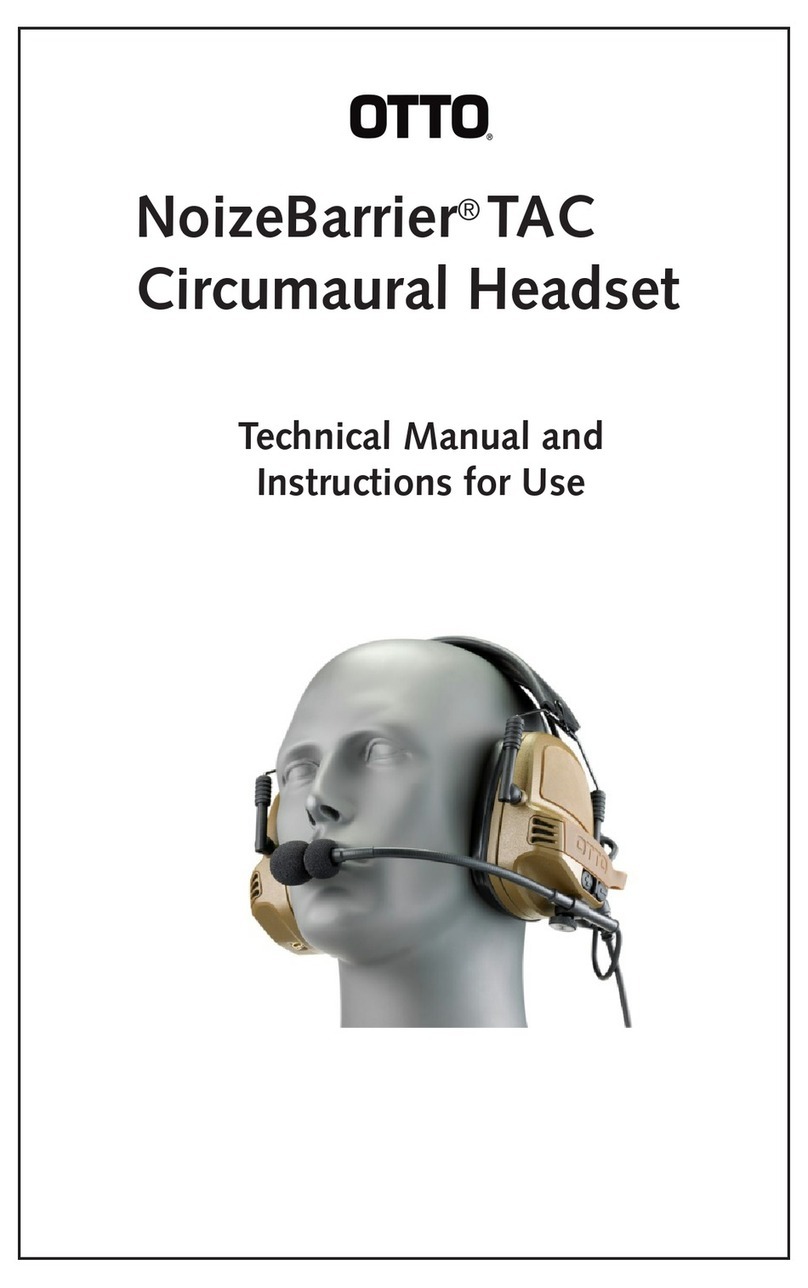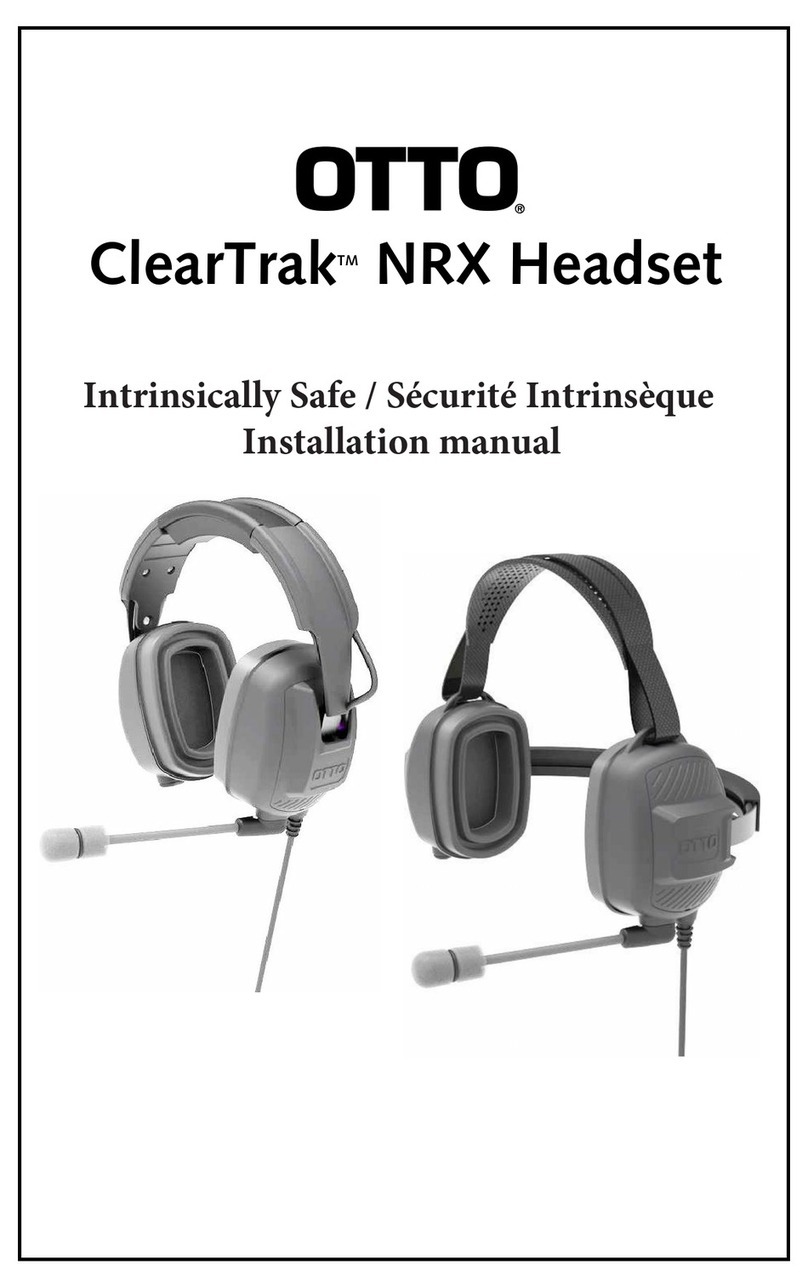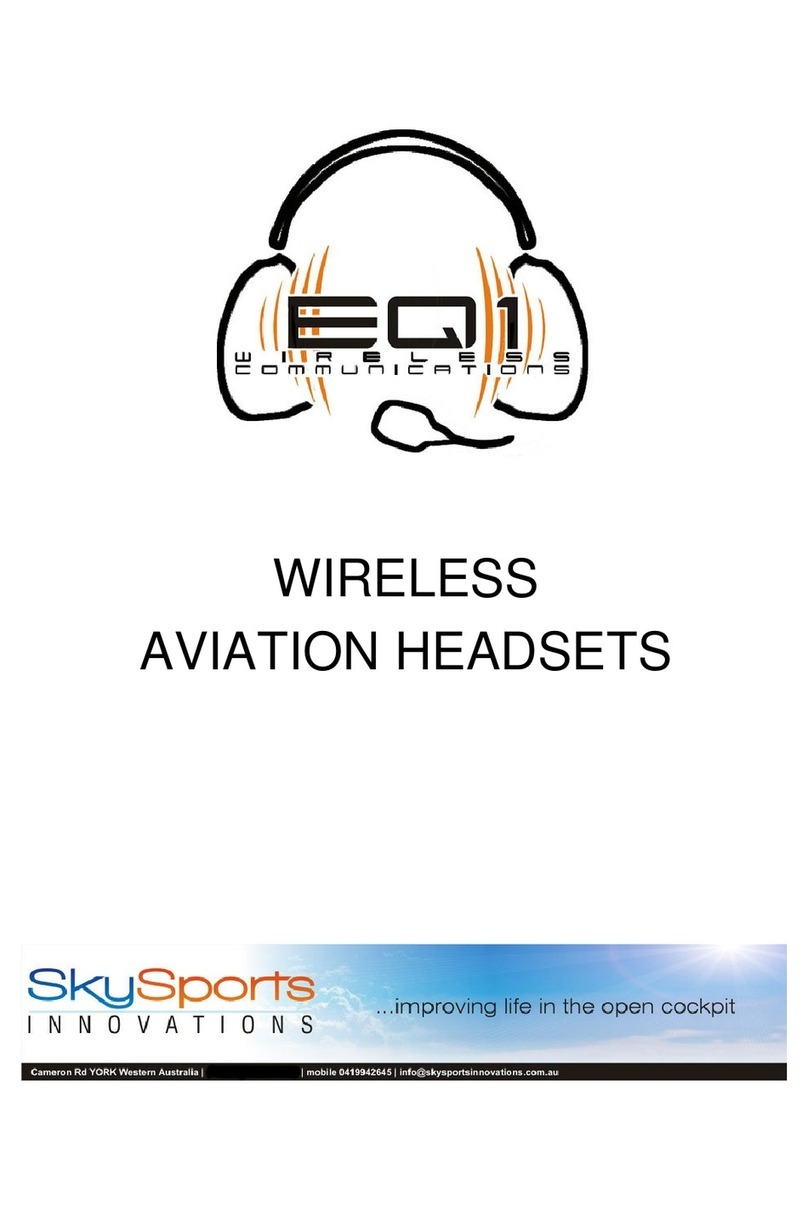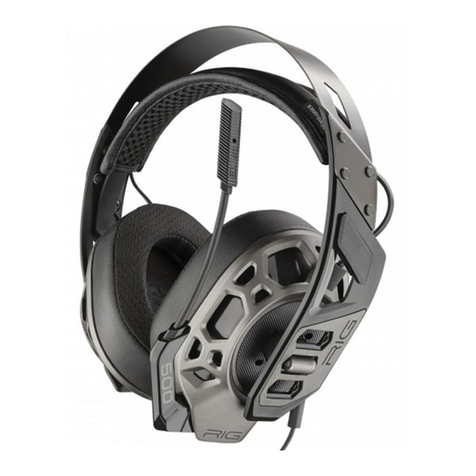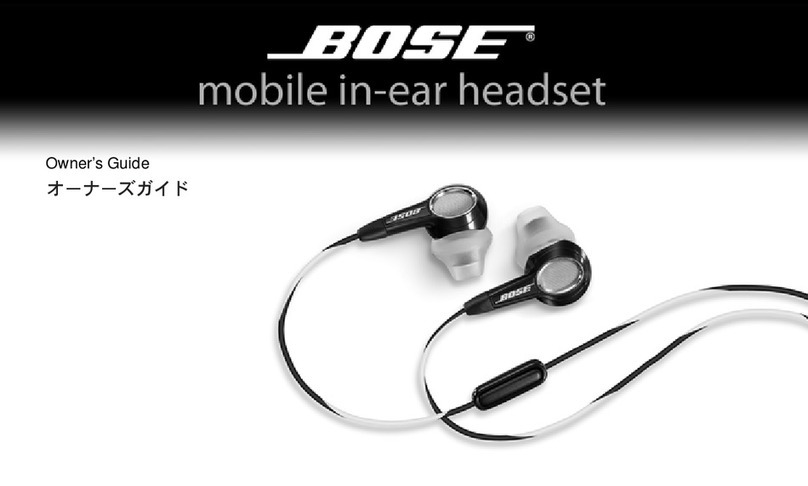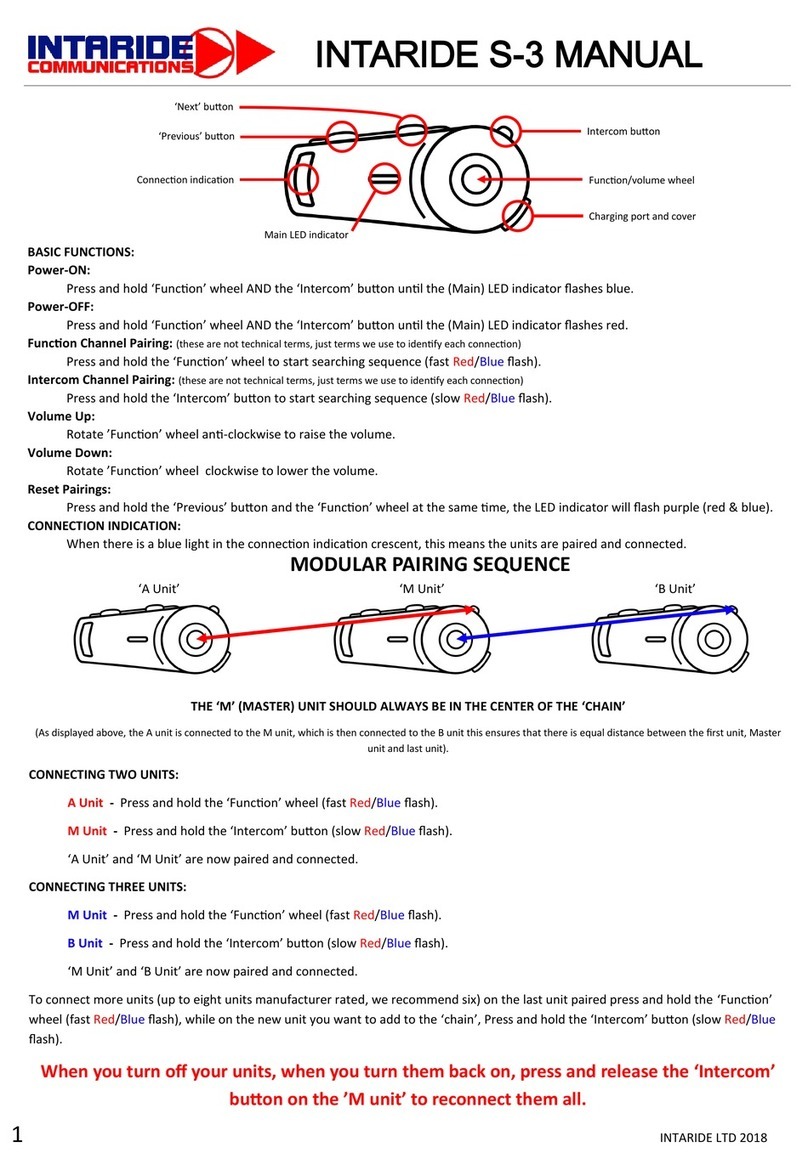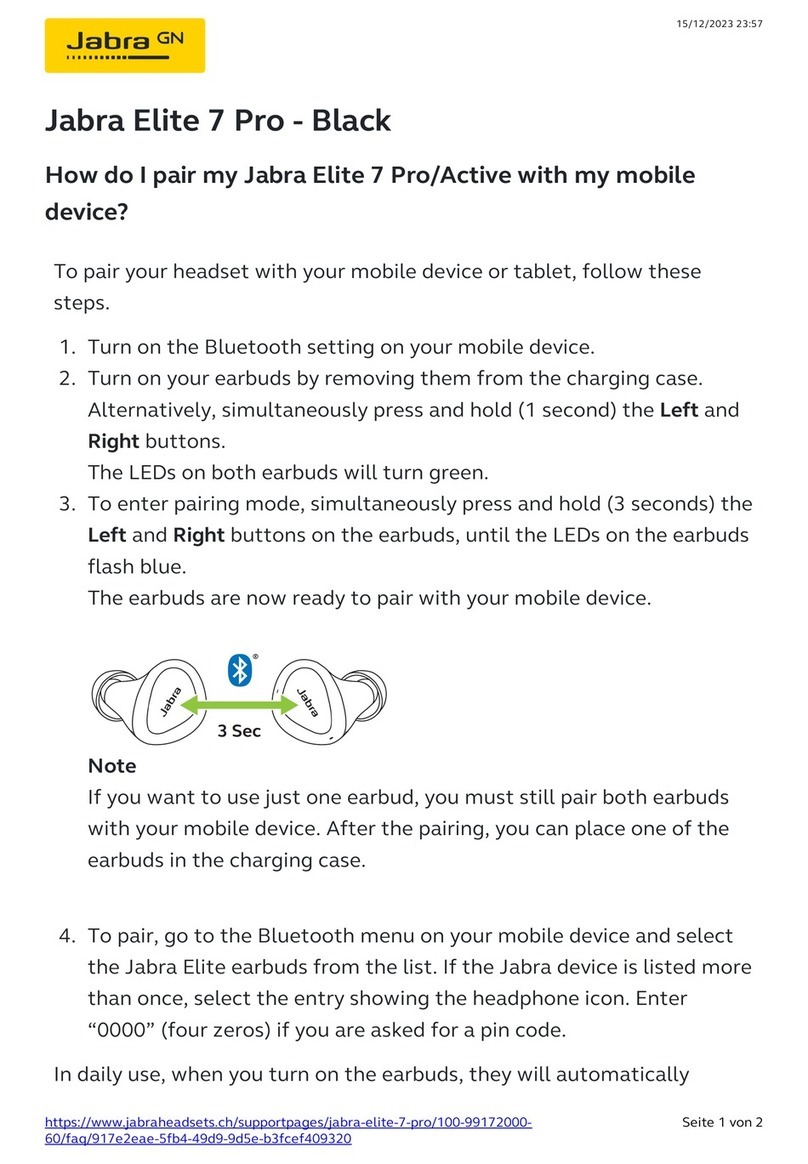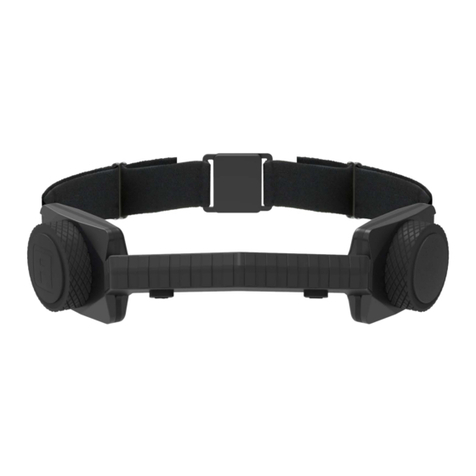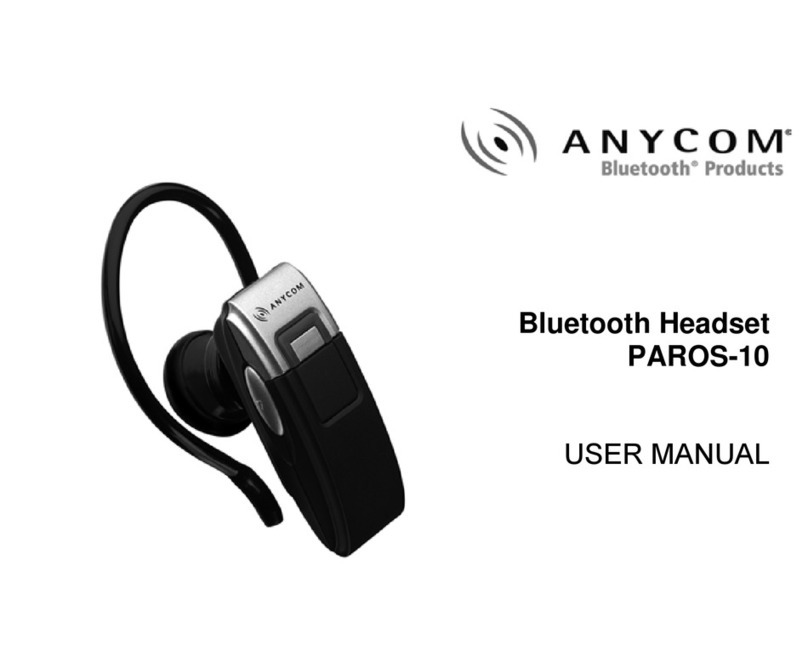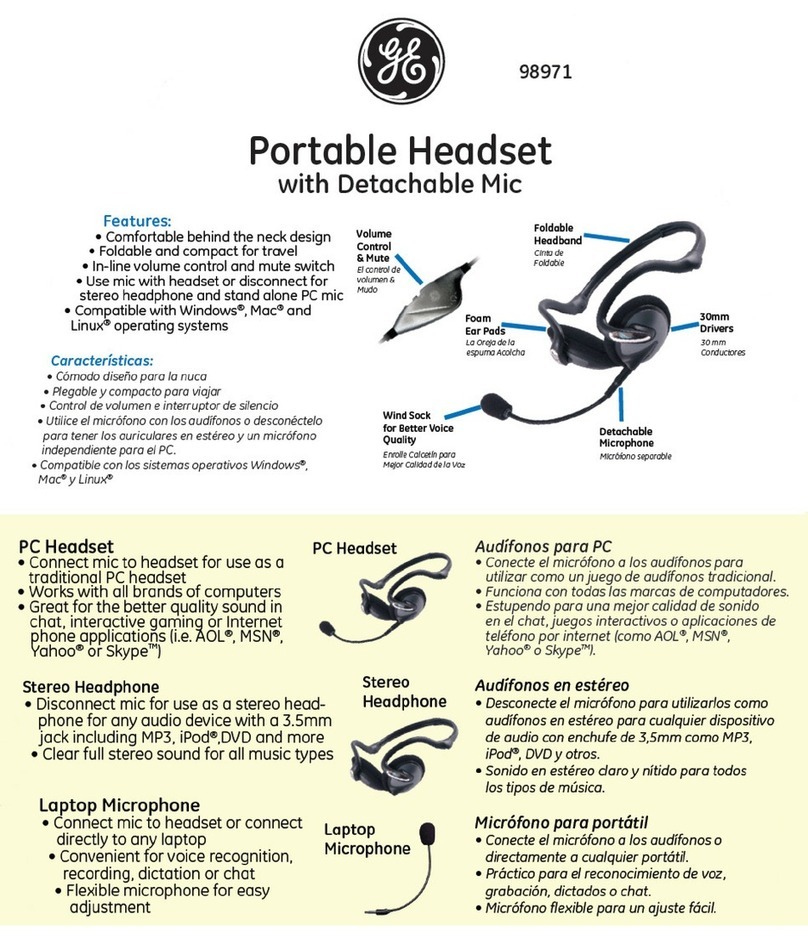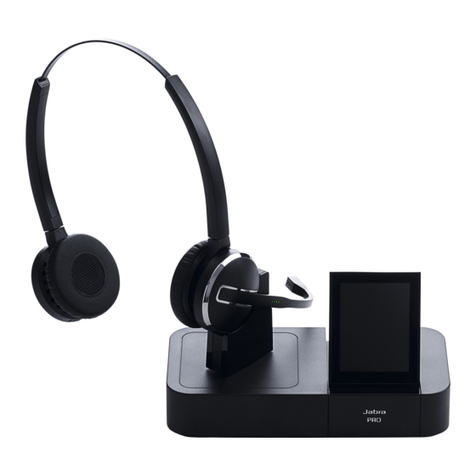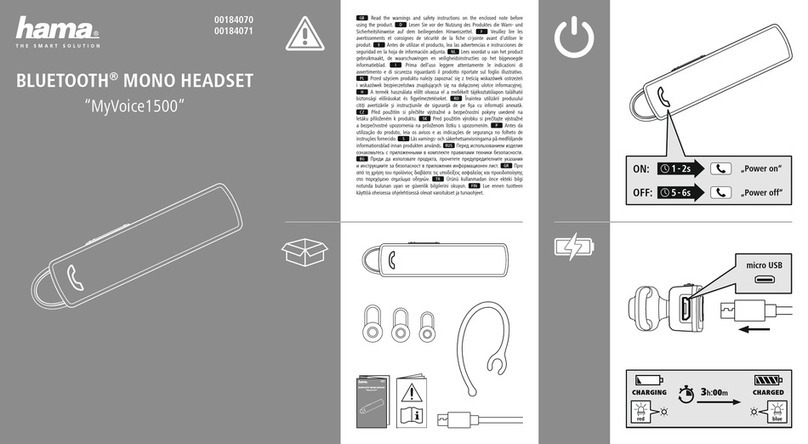
2
IMPORTANT SAFETY WARNINGS
This NoizeBarrier®TAC Headset reduces exposure to noise and loud sounds that
can damage hearing. Be sure to follow the instructions in this manual carefully.
Failure to follow these recommendations may severely reduce the amount of hearing
protection provided by the HEADSET.
• The headset must be worn at all times in noisy environments to avoid hearing
loss/injury.
• Misuse of or failure to wear hearing protection when exposed to hazardous noise
may result in hearing loss and/or injury. If you experience symptoms of hearing
injury (ringing in ears, dulled hearing, headaches), contact your supervisor or a
medical professional immediately.
• The headset must be tted, adjusted and maintained in accordance with
manufacturer’s instructions to achieve the expected attenuation and hearing
protection. Failure to do so may result in hearing loss and/or injury.
• The NoizeBarrier®TAC headset provides audio signal sound pressure level
limitation to limit the radio transmission audio signal to 82 dB effective to the ear.
• The situational awareness feature of the NoizeBarrier®TAC will continue to
function if the batteries in the headset are depleted or missing, as long as the
headset is connected to the radio using the Multi-Port Hub PTT.
• At approximately 30 minutes of battery life remaining, the headset will present
an audible tone to the user indicating that there is low battery life. This will
repeat every 2 minutes until the batteries are depleted.Talk-through powered by
two AAA batteries.
• The thermoplastic polyurethane foam ear seals on the NoizeBarrier®TAC may
deteriorate with use and should be examined at frequent intervals for damage,
such as cracking and leakage. Replace as recommended on page 9.
• Using cloth hygiene covers over the foam ear seals may affect the acoustic
performance of the headset.
• The audibility of warning signals at a specic workplace may be impaired while
using the NoizeBarrier®TAC headset if the situational awareness functionality is
not activated.
• The NoizeBarrier®TAC headset may be adversely affected by certain chemical
substances. Further information should be sought from the manufacturer.
• This earmuff is provided with electrical audio input. The wearer should check
correct operation before use. If distortion or failure is detected, the wearer should
refer to the manufacturer's advice.
• This headset is provided with level-dependent attenuation. The wearer should
check correct operation before use. If distortion or failure is detected, the wearer
should refer to the manufacturer's advice for maintenance and replacement of
the battery. See page 6.
• Battery life may last up to 100 hours if lithium batteries are used. Headset
performance will not degrade over time as the batteries are depleted.
• Warning: the output of the electrical audio circuit of this hearing protector may
exceed the daily limit sound level.

